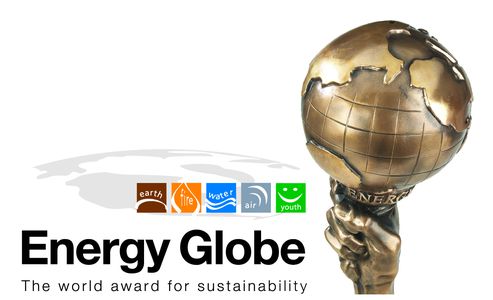Flight Emissions
Flight emissions are calculated by first determining the great circle distance between the two airports for each sector of the flight that you input. The short haul factor is applied to flights with a distance between 0 and 3,700km. Anything above that distance applies the International long haul factor.
(We do not apply Defra/BEIS’s “domestic” factor as this is only appropriate to distances and aircraft used in the UK.)
Note: Defra does not publish a short haul emissions factor for premium economy or first class, so we apply the economy and business class factors respectively.
Why does a First Class or Business Class Flight emit more for the same journey?
The reason that class changes the emissions is that Premium priced seating, such as in First and Business class, takes up considerably more room in the aircraft (and equipment/seating is heavier) than economy seating and therefore reduces the total number of passengers that can be carried. This in turn raises the average CO2 emissions per passenger km.
What is Radiative Forcing Index (RFI) and do you apply it to your calculations?
Radiative Forcing Index (RFI) is a multiplier that takes account of the extra gases emitted to the atmosphere when you fly at altitude – which are greater than burning fossil fuels at ground level. Scientists estimate the impact is between 1 and 4 times greater and it is considered best practice by Defra/BEIS to include a multiplier of 1.9 to take account of these impacts. Climate Impact Partners includes an RFI multiplier in all our flight calculations.
Do your flight calculations align with international reporting protocols?
At the time of creation our carbon footprint calculator applies UK government flight factors, meaning it complies fully. We endeavour to update factors regularly as they change, but there may be a slight delay from factors being published to being incorporated. If you need to know details on this – please contact the team.
CAR EMISSIONS
Most of us do not keep records of how much fuel we have purchased over the year, so the easiest way to calculate emissions is based on the efficiency of your vehicle (which is measured in miles per gallon, litres per 100 km or grams of CO2 per km) and the distance that you drive.
From these inputs we calculate the amount of fuel you’ve used and then apply Defra/BEIS emission factors for the fuel type selected. We use Defra/BEIS’s ‘average biofuel blends’ which take into account the proportion of the biofuel which is included petrol (gasoline) and diesel sold to you on the UK’s forecourts.
For calculating emissions from hybrids, which use technology to improve fuel efficiency, we again take the distance you’ve travelled, your fuel economy and fuel type to calculate the emissions.
If you have a plug in hybrid, you’ll also be using electricity each time you plug in. You’ll need to use the separate energy tab on the calculator to tell us about this. Information from the manufacturer should tell you how many kWh you’re likely to use each time you charge the vehicle. Simply multiply the number of times you’ve charged the vehicle by the kWh used each time, then input that figure in the energy tab. If you charge your vehicle at home, and have already offset your home energy use, you don’t need to add this twice.
ENERGY EMISSIONS
Electricity
Emissions from electricity depend on the blend of fuels used to power the grid you’re connected to. That’s why we ask you for the country in which you have used the electricity. We then apply International Energy Agency (IEA) electricity factors for countries around the world. We’ve included the emissions from the burning of the fuels as well as emissions which occur as a result of getting the electricity to you (transmission and distribution).
If you’re offsetting emissions from your home and you don’t have access to your energy bills, you’ll find average household electricity use in the information pop-up for small medium and large houses, based on data from the UK’s Ofgem. If you select to offset based on the amount you’ve paid (i.e. the ‘cost’ option on the dropdown, the figures are based on average energy prices from the Energy Savings Trust.
We recommend offsetting electricity emissions to cover all your electricity use. Purchasing your electricity through a green tariff is a step in the right direction. However, because of the way our electricity system is set up, this doesn’t always mean the electricity you consume is 100% renewable. Whilst your contract for green energy encourages investment in renewables, this often helps suppliers and governments meet their legal obligations to green the national grid, rather than funding additional green energy provision.
The electricity factors that IEA produces cover all the electricity generated in the national grid (including the proportion of renewables), so when we calculate our emissions from electricity we’re already including the proportion of renewables.
On-site fuel combustion
For other fuels that you burn at home or on site for your business (like natural gas or fuel-oil) you can record what you’re using it for if you want this information to appear when you print off your offset certificate. This does not affect the calculation and you can leave this blank if you wish.
EVENTS CALCULATOR
The majority of the emissions from events come from people’s travel and hotel night stays.
We ask you to tell us where the event is, so we can apply the appropriate electricity emissions factor to your Accommodation details.
Travel to the event
If you haven’t organised the travel, you’ll need to ask attendees how they got to the event. We recommend doing this on arrival (get in touch and we can provide you with a simple sheet to ask them to fill in on registration/arrival).
You can input people’s travel details individually or group together attendees (i.e. if you’re in London and 50 people travelled from greater London by tube, you can assume each made an average 20 mile roundtrip on public transport and add this as one entry).
For flights we’ve given you a business and economy option. We apply the factor depending on the distance of the roundtrip. First we halve the distance to establish whether the flight was short haul (up to 3,699km) or long haul (over 3,700km). We then apply the appropriate Defra/BEIS figure to the entire distance.
Energy Use
If you’d like to include emissions from energy used by the venue, you’ll need to ask the venue for details. If they can provide this information you can input kWh of electricity and any gas used to heat the space separately in the energy tab. If they cannot – you might want to 110% your offset at checkout – to help take account of these emissions.
Accommodation
We’ve used a report produced by Cornell University which gives average kWh usage from electricity used per hotel night for either luxury and standard hotels. We’ve then used the electricity factor based on the country where you’re holding the event.
Small Business Calculator
If you already know the amount of emissions you want to offset:
- You can go to the start menu, enter your total tonnage and proceed to the checkout.
- You can record more detail about what you are offsetting by using the business calculator. In each section select ‘Quick offset, tonnage already known’. The calculator will total each activity type for you and break down the emissions by activity type on your certificate.
If you haven’t yet calculated your emissions:
- You can work through the calculator, entering your specific business impacts.
- You can use your accounting system to derive your impacts. This option will take you to the software of our B Corp-certified partners, Carbon Analytics. This option allows you to calculate scope 3 emissions from your supply chain.
For advice on the best option for your business, please call the team on +44(0)1865 591000.
NOTE: If you have already added information about energy use, flights or cars using other tabs on the calculator, simply tick the ‘add impacts to business offset’ check box and those calculations will automatically be populated in the sections in the Business calculator.
BUSINESS ENERGY
Grid Electricity
We apply the IEA electricity factors from your chosen geography. Please note these factors already include the renewables in the mix for each grid as published by governments, so we would recommend you offset emissions from electricity even if you do buy a renewable tariff.
If the country you’re situated in doesn’t appear on this list this is because their emissions factors are not published by IEA so you’ll need to use one of the following average factors which should cover all countries without a specific factor:
- Africa (average)
- EU (average)
- Latin America (average)
- Middle East (average)
- Non-OECD Europe and Eurasia (average)
Onsite fuel combustion
All options in the drop down apply the Defra/BEIS published factors. For company reporting, you can add the purpose for which you are consuming on site fuel using the dropdown list. However, this is not essential and will not affect the emissions calculation.
Office space offset if fuel unknown
Businesses that hire space and have a service charge for energy use or that don’t have access to their energy bills can offset using this option and selecting the area and office type they occupy. Energy consumption is calculated using figures from the UK Association for Decentralised Energy, then emissions calculated using factors of gas/fuel oil and electricity from Defra/BEIS reporting Guidance.
Renewables
If your business purchases renewable energy through a green electricity tariff you can record that by putting in your kWhs into the calculator. It will be included as zero rated on your offset certificate – as per current reporting protocols. However, we recommend purchasing a green energy certificate or offset to cover all your electricity use. This is because the way our electricity system is set up, purchasing a green energy tariff doesn’t always mean the electricity you consume is 100% renewable. Whilst your contract for green energy encourages investment in renewables, this often helps suppliers and governments meet their legal obligations to green the national grid, rather than funding additional green energy provision.
TRANSPORTATION
Company Cars
Most companies find it relatively simple to capture distance travelled by employees from expense claims – if you know how much people claim per mile, simply divide the total figure claimed by that and you’ll get the total miles travelled. However, you may not be able to capture the fuel type quite as easily. If you don’t know the type of fuel used you can select ‘Unknown’ as your fuel type. We’ll then apply the UK’s weighted average of 66.7% petrol (gasoline), 32.7% diesel, and 0.6% LPG. This distribution is derived from the UK Department for Transport’s Vehicle Licensing Statistics: 2012.
Public Transport
- Bus – we use Defra/BEIS’s per passenger km factor for Average Bus
- Ferry – we use Defra/BEIS’s per passenger km factor for Average (all passenger) ferry
- Train – we use Defra/BEIS’s per passenger km for the UK’s national rail system
- Taxi – we use Defra/BEIS’s per taxi km figure for ‘regular taxi’ – if you hail a taxi you take responsibility for all emissions from that journey – not just the average individual passenger figure as with other modes of public transport.
Company Flights
There are a few options for adding company flights – you can go to the flights calculator and put in the routes for each company flight, calculate them separately, add them to the basket, then go to the business calculator and tick ‘add impacts to business offset’. Or, in the business calculator select ‘enter my specific transport impacts’ and ‘company flights’ and you’ll be given the option to add total distance travelled by the company on short haul and long haul flights and we’ll apply the Defra/BEIS average emissions factor for each of those.
If your company takes more than 20 flights a month please get in touch and we can provide you with a spreadsheet for you to populate so we can calculate the emissions for you.
Freight
Road Freight
- Rigid Lorry – we use the DEFRA/BEIS emissions factor for tonne kilometres for UK average efficiency rigid Lorries with the UK’s average loading applied.
- Articulated Lorry – we use the Defra/BEIS emissions factor for tonne kilometres for UK average efficiency articulated Lorries with the UK’s average loading applied.
Air Freight
Depending on the distance you input into the calculator, we’ll apply the Defra/BEIS tonne kilometre air freight factor for either short haul (under 3,700km) or long haul (over 3,700km).
If your air freight comes in from multiple destinations, input each destination separately and the total weight imported from that destination so that the correct factor is applied for the distance it’s travelled.
Sea Freight
Input the distance your product has travelled and the weight you’ve imported. We then apply the Defra/BEIS tonne kilometre factor for the appropriate vessel.
If you don’t know the distance between the ports you’re importing from, a useful resource is the sea freight distance calculator at sea-distances.org. This will calculate distance travelled between ports (Climate Impact Partners is not responsible for the content of external sites).
Other Business Emissions
We’ve given you an option to add emissions from any additional impacts that you may not have already covered. Simply input the tonnage and it will be added to your business impacts report.
Checkout
At the checkout we provide you with the option to add 10% to your offset – tick 110%. As good practice you should choose this option to account for any inaccuracies in your calculations, missing information and towards historic emissions. Simply tick the box and it will be added to your bill and your certificate as a separate line item.
We use Stripe for processing payment, so Climate Impact Partners does not hold any of your financial details on file.
Gift Options
If you are purchasing carbon offsets as a gift, we can incorporate a special message on the offset certificate that will be mailed to you after checkout. You will receive your receipt separately from the offset certificate, so that you can forward the certificate to the recipient.
A “From: ” field will be populated on the offset certificate with the name (or organisation) you provide on the payment screen.
If you are not purchasing carbon offsets as a gift you can ignore these fields. You will receive a combined offset certificate and receipt.










